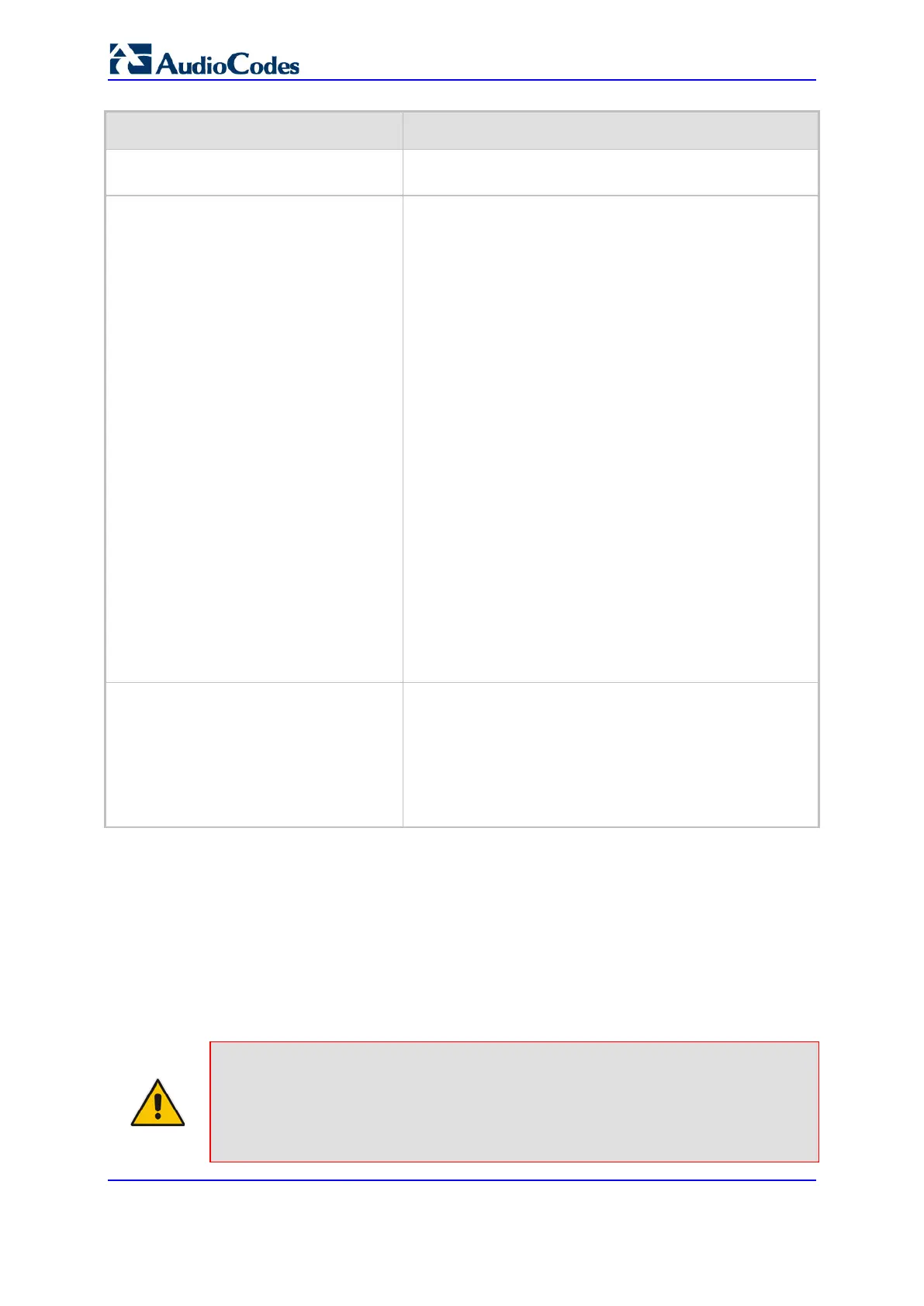User's Manual 582 Document #: LTRT-27045
Mediant 1000B Gateway & E-SBC
Parameter Description
[TargetOfChannel_Destination]
Auto Dial Status
auto-dial-status
[TargetOfChannel_Type]
Enables automatic dialing.
[0] Disable = Automatic dialing for the specific port is
disabled.
[1] Enable = (Default) Automatic dialing is enabled and
the p
hone number configured in the 'Destination Phone
Number' field is automatically dialed if the following
occurs:
FXS interfaces: The phone is off-hooked
FXO interfaces: A ring signal (from a PBX/PSTN
switch) is detected on the FXO line. The device
initiates a call to the destination without seizing the
FXO line. The line is seized only after the SIP call
is answered.
[2] Hotline = Automatic dialing is done after an interval
configured by the 'Hotline Dial Tone Duration'
parameter:
FXS interfaces: When the phone is off-hooked and
no digit is dialed within a user-defined time, the
configured destination number is automatically
dialed.
FXO interfaces: If a ring signal is detected, the
device seizes the FXO line, plays a dial tone, and
then waits for DTMF digits
. If no digits are detected
within a user-defined time, the configured
destination number is automatically dialed by
sending a SIP INVITE message with this number.
Hotline Dial Tone Duration
hotline-dia-ltone-duration
[TargetOfChannel_HotLineToneDuration]
Defines the duration (in seconds) after which the
destination phone number is automatically dialed. This is
applicable only if the port has been configured for Hotline
(i.e., 'Auto Dial Status' is set to Hotline).
The valid value is 0 to 60. The default is 16.
Note: You can configure this Hotline interval for all ports,
using the global parameter, HotLineToneDuration.
27.6 Configuring Caller Display Information
The Caller Display Information table lets you configure caller identification strings (Caller
ID) per FXS and FXO port. The table also lets you enable the device to send Caller ID to
the IP side for Tel-to-IP calls. The device sends the configured caller ID in the From header
of the outgoing SIP INVITE message. For more information on Caller ID restriction
according to destination/source prefixes, see ''Configuring Source/Destination Number
Manipulation'' on page 503.
Note:
• If an FXS port receives 'private' or 'anonymous' strings in the SIP From header,
the calling name or number is not sent to the Caller ID display.
• If the device detects Caller ID on an FXO line (EnableCallerID = 1), it uses this
Caller ID instead of the Caller ID configured in the Caller Display Information table.

